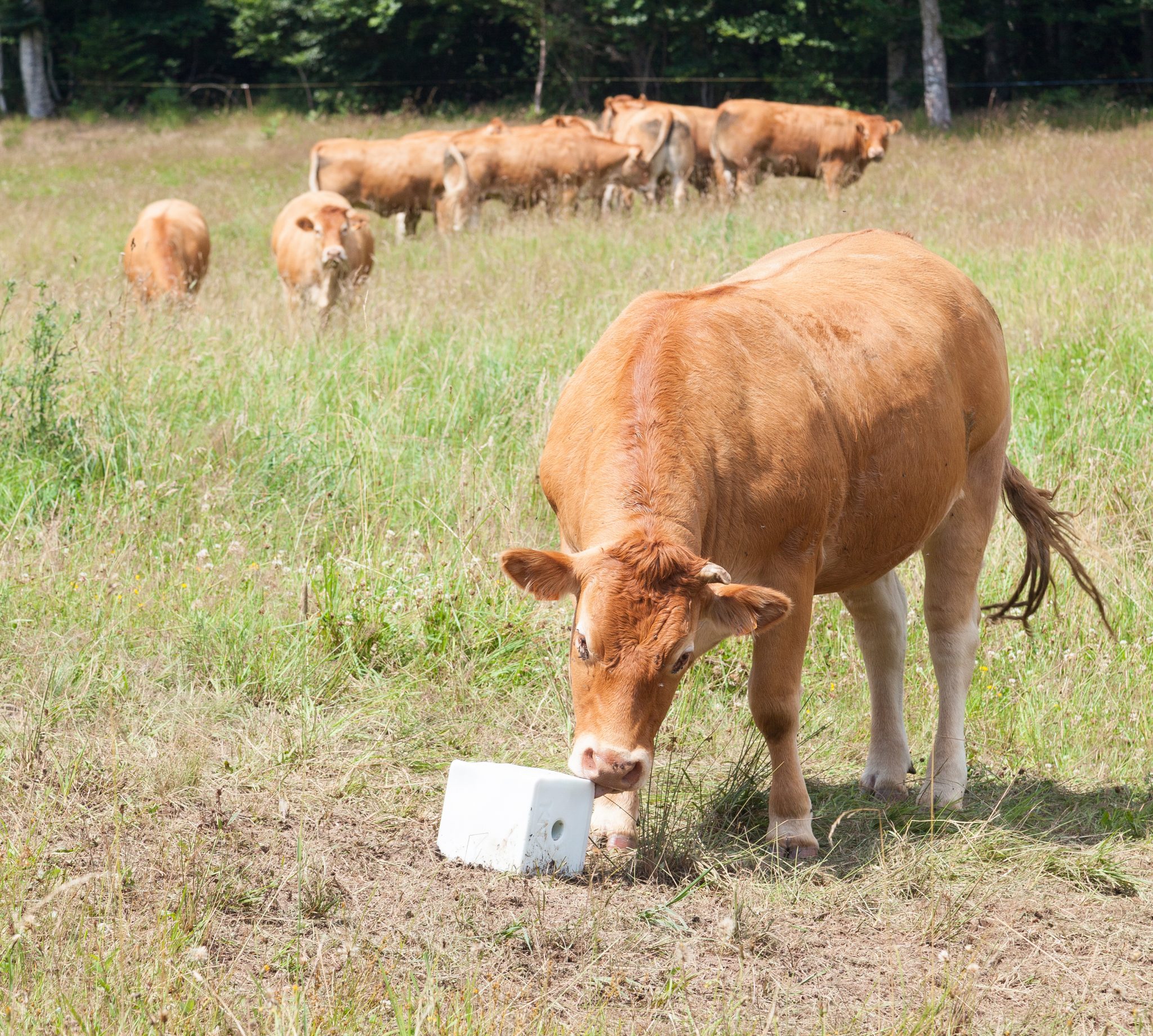Beef

Know the points to consider when purchasing mineral supplements for the cow-calf operation.
Consumption Levels
The inclusion of salt in mineral mixes can encourage or discourage mineral consumption and regulate intake rates. Salt is usually added to encourage the consumption of trace minerals since cattle do not naturally consume trace minerals when fed alone. Most commercial trace mineral mixes are designed to limit intake to between 2 and 4 ounces per day. Seasonal variation in consumption may occur. Cattle may consume more salt-based minerals during the summer months but less in the winter. Consider differences in mineral composition and daily intake rate when comparing the cost of mineral supplements.
Supply of Minerals
Check mineral supplies regularly. If cattle run out of minerals for extended periods of time, luxury consumption may occur once minerals are provided, and levels will not be within the 2- to 4-ounce range. Given time, however, consumption will return to normal.
Free-Choice Loose Minerals
A wide range of free-choice loose minerals are commercially available. The majority of these mixtures contain between 15 and 25 percent salt. Intake is usually between 2 and 4 ounces of product per day.
Trace Mineral Blocks
Salt blocks fortified with trace minerals may be marginal or deficient in meeting the daily trace mineral requirements in grazing cattle. Due to the physical hardness of these products, cattle are often unable to consume the needed amount. When producers are unable to provide loose minerals or fortified supplements on a regular basis, trace mineral-fortified block supplements may reduce the incidence of trace mineral deficiency.
Fortified Energy-Protein Supplements
Mineral fortification of energy-protein supplements may be an effective strategy to provide trace mineral supplements to cattle. Free-choice trace mineral supplements can be added to the winter feed supplement to help ensure trace mineral consumptions during the winter months. Do not feed fortified energy- protein supplements in combination with free-choice mineral supplements.
Hi-Mag Minerals
A Hi-Mag (high-magnesium) mineral is typically needed only during late winter and early spring. Early growth of cool-season grasses may be deficient in magnesium. They may contain other mineral compounds that reduce magnesium absorption, requiring supplementation to prevent the occurrence of grass tetany.
Bioavailability of Minerals
The source of minerals can influence animal performance and the cost of a mineral supplementation program. When selecting a free-choice mineral, choose those supplying zinc, copper, and manganese in the form of sulfate and not oxide. These forms are more available to the animal and used more effectively. Chelated or organic minerals may have increased availability to the animal but are usually more expensive than inorganic sources. Before purchasing, evaluate the class of livestock being fed and whether it is economically advantageous to feed them such a mineral.
Selecting a Supplement
Mineral concentration of feeds (forages and by- products) varies greatly and should be tested to get the most accurate estimation. Some by-products contain high levels of phosphorous (e.g., dried distillers grains or corn gluten feed) and may not require additional phosphorous supplementation. Pay particular attention to the calcium-to-phosphorous ratio and do not feed more phosphorous than calcium. Keep the ratio higher than 1:1 at all times. The following are examples of mineral supplements.
Example Guidelines for Mineral Supplementation of Beef Cows†
Salt-Based Mineral Supplement on Cool-Season Perennial Grass Pasture††
- 6–12 percent calcium
- 6–12 percent phosphorous for non-P fertilized pastures*
- 4–8 percent phosphorus for P fertilized pastures*
- 8–14 percent magnesium during late winter and spring
- 0.09–0.18 percent copper (900–1,800 ppm)
- 0.18–0.36 percent zinc (1,800–3,600 ppm)
- 0.0026–0.0052 percent selenium (26–52 ppm)
Salt-Based Mineral Supplement on Warm-Season Perennial Grass Pasture†††
- 6–12 percent calcium
- 6–12 percent phosphorous for nonfertilized pastures*
- 4–8 percent for fertilized pastures*
- 1–4 percent magnesium
- 0.15–0.18 percent copper (1,500–1,800 ppm)
- 0.25–0.36 percent zinc (2,500–3,600 ppm)
- 0.0026–0.04 percent selenium (26–40 ppm)
†Some levels may be somewhat lower or higher than on commercial mineral labels. Many formulations exist and may be usable in your situation.
††Assumes a consumption rate of 4 ounces per head per day and grazing average-quality tall fescue (60 percent TDN, 12 percent CP).
†††Assumes a consumption rate of 4 ounces per head per day and grazing average-quality bahiagrass (55 percent TDN, 10 percent CP).
*Given phosphorous fertilization according to soil test recommendations. Note: Pastures with high levels of soil P may not require P fertilization or higher levels of P in mineral supplements.
Download a PDF of Considerations for Mineral Supplementation in Cow-Calf Operations, ANR-2209.

